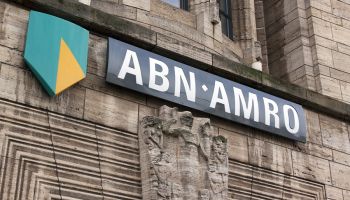How Dutch Bank ABN AMRO Describes Strategy and How it Differs from US Banks
Claims that more than 50% of their domestic clients want to be more “sustainable”
- |
- Written by Banking Exchange staff

ABN AMRO recently released its annual report, and gave a very clear sense of how the bank sees its responsibility not only to its customers, but also its broader stakeholders. The strategy is broken down into three “strategic pillars.”
- Support clients’ transition to sustainability.
- Reinvent the customer experience.
- Build a future-proof bank.
The last two pillars might not strike an American banker as being quite as surprising as the first one. The bank claims that more than 50% of their domestic clients want to be more “sustainable”, making reference to climate risk. The statement also mentions that its private banking unit makes sustainability its “default option” for new clients with a target investment of 16 billion Euros by the end of 2020, and even mentions a specific target for commercial properties to be fully energy efficient by 2030.
The goals in some sense are admirable, but it certainly shows the stark contrast between a United States bank and a European bank. While ESG investment interest is growing in North America, there is still a question in investors’ minds of whether it makes sense to focus too much on these issues while creating a balanced portfolio. Corporate responsibility in the U.S. still focuses more on doing no harm more so than strategic initiatives to effect investment strategy for its clients based on climate change.
The second and third pillars are closer to what every bank should be focusing on. The bank states that they are going to focus on their clients’ “pain points” particularly on the retail side when starting a bank account or applying for a loan. Notably, the strategy specifically mentions apps such as Tikkie, Grip and Tink…something Banking Exchange has emphasized. Banks must develop a strategy focused on partnering with fintechs. “We will also ‘co-create’, working with outside partners where it makes sense-to extend our products and services, and build new eco-systems,” the report states.
With its focus on being “future proof”, ABN Amro commits to developing new skills for its employees and talent development. Interestingly, while mentioning the type of talent they are looking to attract the bank not only mentions technology and analytics skills, it once again makes reference to sustainability.
ABN Amro gives a very clear strategy for its business that can attract talent and prepare the company for some of the challenges ahead. At the same time, the bank clearly is favoring investment opportunities and businesses allied with climate change initiatives. The strategy can pay off, as European asset owners for example, have mandates that align with this strategy. However, U.S. investors and many banking clients are not quite all in on this strategy. If the global economy slows, it will be interesting to see if European banks will keep to its focus on climate risk or if the reports will be more focused on sustaining its business than the planet.













